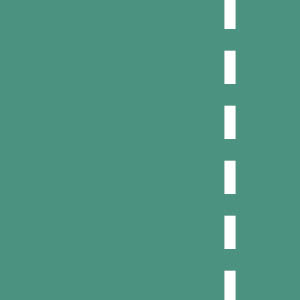 Musicians often are rather undiligent in notating the endings of musical lines. They seem to leave the exact length of the long notes up to the singer or instrumentalist.
Musicians often are rather undiligent in notating the endings of musical lines. They seem to leave the exact length of the long notes up to the singer or instrumentalist.
Here is an example. The start of Yesterday by The Beatles is often notated as follows:
The last syllable of the word “yesterday” is simply held until the end of the bar. However, it feels quite unnatural to sing the word that long. In the version of The Beatles Paul McCartney sings the word notably shorter. And probably singers who cover the song, do as well:
Arrangements for choirs
In lead sheets it’s no problem if phrases are simplified in the way described above. However, in choral arrangements it’s wise to indicate more precisely where phrases should end. After all, singers within a voice group are supposed to cut off notes together. In classical music, conductors usually indicate the endings of words using a gesture. In pop and jazz however, songs usually have a fixed tempo and conductors play a less central role. Therefore, in these kinds of music it is practical to notate the lengths of the notes precisely.
Endings in between beats
In my arrangements I often write endings of phrases in between beats instead of on the beat, just like in in the above example. To my feeling, endings sound more natural this way. Below are some examples. To start with, let us look at a jazz song. In the first musical sentence of What a wonderful world I let the words “green” and “too” end in between the fourth and first beat:
If these phrases would end on the barline, the melody would feel kind of boring. If on the other hand these words would stop on beat four, the lines would seem to cut too early and bluntly.
Pop songs
Below are three fragments of pop arrangements, in which the endings of phrases fall in between beats as well. In Lullabye by Billy Joel the first line is ending in between beat three and four. If the chord would be sung until the barline, the singers would get insufficient time to breath: In the chorus of Love song by Sarah Bareilles I have written the ending of the first musical phrase in between beat two and three. In this example, it’s clear that an eighth note on the word “song” would be too short and on the other hand a dotted quarter would not fit the energy of the melody:
In the chorus of Love song by Sarah Bareilles I have written the ending of the first musical phrase in between beat two and three. In this example, it’s clear that an eighth note on the word “song” would be too short and on the other hand a dotted quarter would not fit the energy of the melody:

By the way, this writing technique doesn’t only fit songs in slow or medium tempo. For instance, in Stop this train by John Mayer – which has a rather high tempo – it feels natural to end the phrases in between the beats as well: